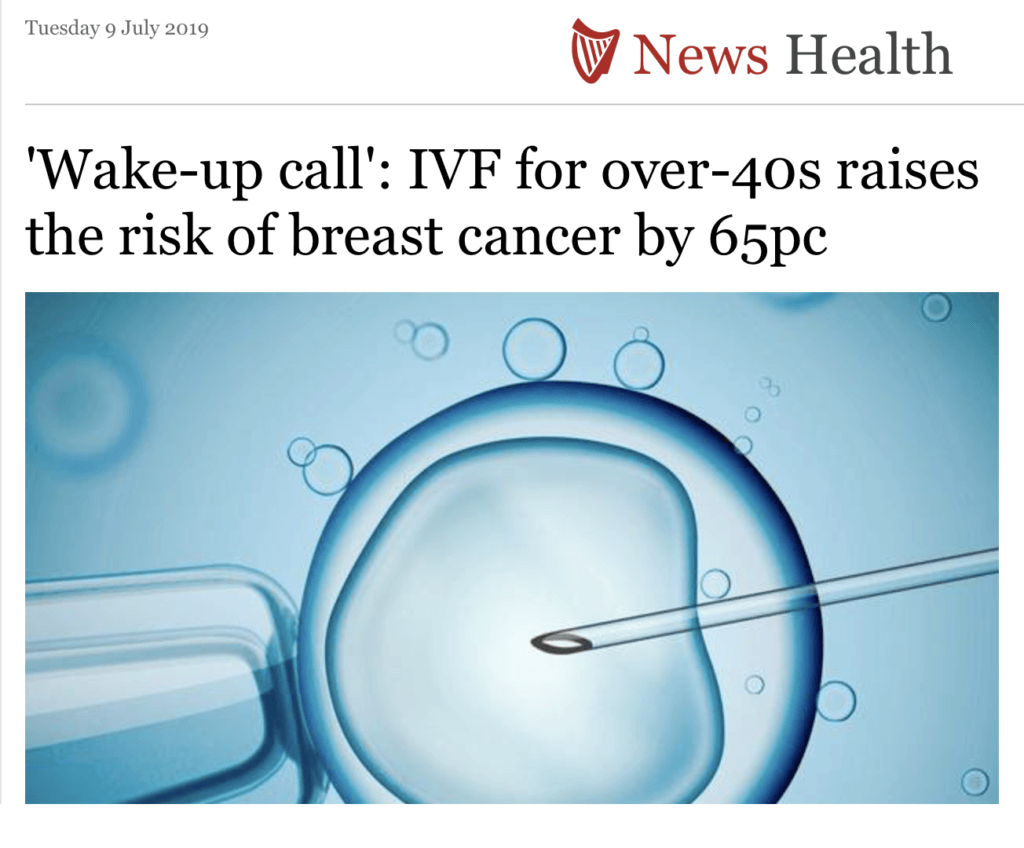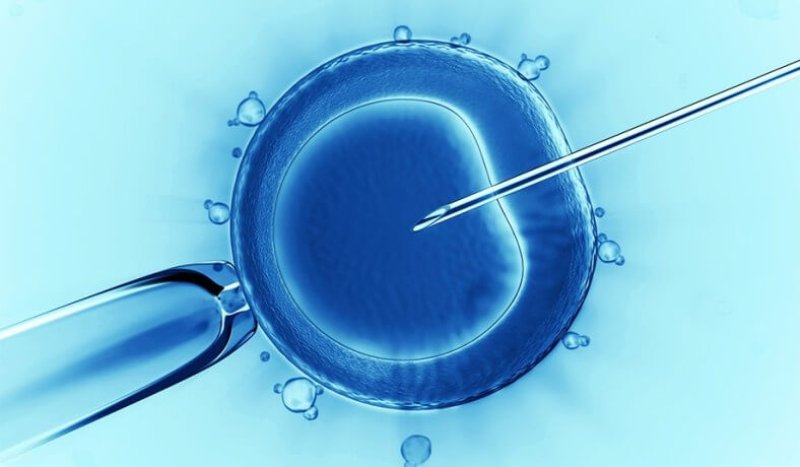Take the case of the ongoing debate bout the alleged dangers of in vitro fertilization. For years, researchers have sought to answer the question of whether IVF increases patients’ risk for cancers of the breast and ovaries. In the past, a Dutch study suggesting higher cancer risks, particularly for women over 40, has sparked care headlines:
 ‘Wake-up call’: IVF for over-40s raises the risk of breast cancer by 65pc, IVF CANCER PERIL Women who have kids using IVF are more likely to develop breast cancer, study warns, and IVF treatment increases risk of breast cancer, major study finds.
‘Wake-up call’: IVF for over-40s raises the risk of breast cancer by 65pc, IVF CANCER PERIL Women who have kids using IVF are more likely to develop breast cancer, study warns, and IVF treatment increases risk of breast cancer, major study finds.
Are we to believe that IVF too dangerous to even consider if you are entering middle age? Let’s examine that study.
The study tracked 660.000 women, 60,000 of whom had fertility treatments from 1994 to 2015. Unlike in a previous Dutch study released three years earlier, researchers found an elevated risk of breast cancer of 14 percent. For women over 40, the increase was 31 percent.
‘We see a stepwise increase in risk; especially among women who are 40 plus,’ said University of Copenhagen researcher Ditte Vassard, who presented the findings at the European Society for Human Reproduction and Embryology annual conference in Vienna. Within days, we found ourselves staring at stories shouting about “wake-up calls” and “cancer peril”.
But the real world dangers were far less than what the statistics seem to suggest. There is a huge difference between what is called relative risk and absolute. Relative risk is a number that tells you how much something you do, such as maintaining a healthy weight or in this case getting IVF, can change your risk compared to your risk if you’re very overweight or did not get an IVF. If something you do triples your risk, then your relative risk increases 300%.
Absolute risk is the size of your own risk. Absolute risk increase is the number of percentage points your own risk goes up if you do something, such as getting IVF. The size of your absolute risk reduction depends on what your risk is to begin with.
So what does that mean in this case? Some of the doctors quoted in stories sounded alarm bells.
If other people find the same findings an important message we have to tell our patients is: an additional reason to come early [for treatment] is the later you come, the more risks you have for the increased risk of cancer,’ said Professor Willem Ombelet from Genk, Belgium.
Other experts were more measured. ‘”My feeling is that we shouldn’t get too hung up about breast cancer as associated with IVF,” said Melanie Davies, a gynecologist at University College London Hospitals. Although the relative risk percentage shot up dramatically, she explained that because the number of cases are infinitesimal, the real risk increase was close to negligible. The relative risk “was 1.14 which is statistically significant, but if you look at absolute numbers it’s not that massive because breast cancer is not a common disease. It’s going to be small numbers of women” in the general population she explained.
Essentially, Davis said, the study concluded that for every 100,000 ‘person years’ (e.g. an estimate of the actual years at-risk when you add up all the patients ages) was about 1 extra case. Not enough, she believes for women to skip IVF if they and their doctor are clear on the advantages balanced against these minimal risk factors.
Davies had co-authored a 2018 study published in the British Medical Journal that found no link between IVF treatments and breast cancer. “Their risk ratio was not that dramatic. It was 1.14 which is statistically significant, but if you look at absolute numbers it’s not that massive because breast cancer is not a common disease. It’s going to be small numbers of women.”
The danger of such overheated media coverage shouting out oversized health risks is that it scares woman away from pursuing IVF even though the real world dangers are extremely slim. A small increase in the risk of developing an uncommon disease still leaves you with only a slim chance of developing that disease.
The only reason the study’s results burst into the headlines was because of this statistical sleight-of hand. The research was little more than a recapitulation of a 1999 study, which found the exact same thing, but it was framed differently then as relatively inconsequential. Times have changed, and perhaps media restraint or science literacy is in shorter supply.
Tim Barker, managing editor for the Genetic Literacy Project, is a veteran reporter, most recently with the Orlando Sentinel and St. Louis Post Dispatch. BIO. Follow him on Twitter @tbarker13
This article previously ran on the GLP July 9, 2019.































